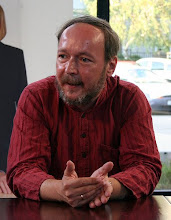
The UN Convention on the Rights of Persons with Disabilities entered into force early this May. The first session of the Conference of States Parties, which is to elect the treaty body responsible for the international monitoring of its implementation, will meet in November. Disability rights activists, Disabled People's Organisations (DPOs), civil society organisations are now busy with advocating for a universal ratification and meaningful implementation of the Convention.
Efficient advocacy requires consciousness. Advocates need to design and execute strategies that are capable to bring about the paradigm shift emerging in the Convention. As the old paradigm of pity, protection even at the cost of prevention of personal capability development, deficiency, charity has been ruling for centuries, we need tremendously powerful strategies.
There can be two different approaches. The top down strategy starts with CRPD as an international legal instrument. This deductive way explains what implications CRPD has for the lives of persons with disabilities. The strength of this method is the authority of international law. Its weakness comes from the very same: for many people international law is abstract and distant, hardly ever related to real life. There are so many examples of States' non-compliance with their internatioal obligations. This top down approach needs to work with the necessarily open textured Convention language, open to various interpretations. The one with better technical knowledge of law has better position in winning with their interpretations. Grassroots people and their movements are disadvantaged in this mostly technocratic competition of interpretation. The State and its concern is central in such a discourse. People's participation is seen as one of the State obligations, as it is in the text of the Convention, rather as the overarching sine qua non condition for bringing about social change with the leadership of persons with disabilities. Lawyers are the central actors who teach civil society, which is often sceptical about its usefulness. People who had been denied our opportunity to assert our rights to protect our dignity and interest have not had much benefit from the law. All these are hardly empowering for those whose rights are to be promoted and protected.
The bottom up strategy, on the other hand, starts with the already identified needs, aspirations, dreams and hopes of the grassroots. Looks at the Convention as a tool to strengthen our hands in our ongoing advocacy efforts. This gives us a chance to interpret the open textured language so that it reflects what we want to achieve. Interpretation then is no longer a technocratic game but an expression of the lived experiences of persons with disabilities. People's participation is not just an obligation of the State but the driving force and the medium of an open and broad human rights discourse and the Convention is a powerful framework for it. The strenght of this approach is given by the authenticity of people rather than the authority of law. Law becomes what it should be: empowerment of those who had been deprived of equal participation. Central actor is civil society with the leadership of persons with disabilities. They teach lawyers how to interpret the Convention. This approach is potentially much more empowering and the emppowerment comes from the process itself rather than from the good will of the State and of the legal experts.

No comments:
Post a Comment